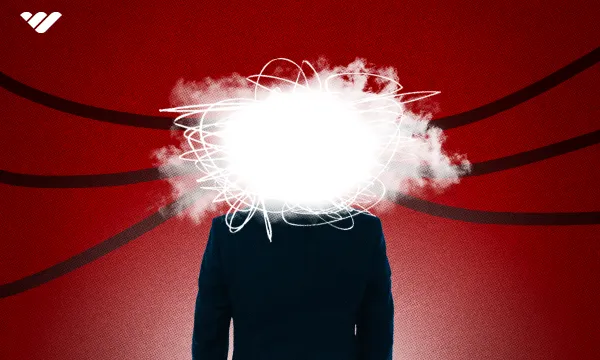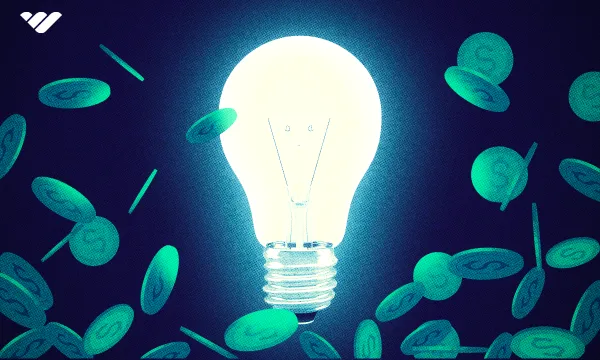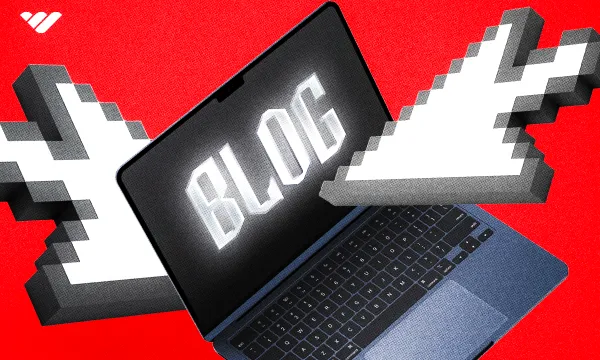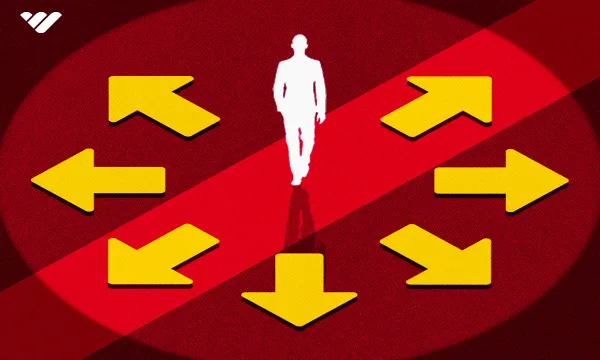Imagine how powerful it would be to be able to step into your customers’ shoes and see their unique pain points, emotions, and thoughts at any given time. This would allow you the ability to tailor your marketing materials, support, and even product offerings to address your customer in the most specific way possible. And with a SaaS customer journey map, you can make all this a reality!
This is a tool businesses like yours use to create the best possible experience for customers. It gives a detailed view of what the customer goes through from before they even know your SaaS exists to the point where they’re recommending it to their own friends and family.
In this complete guide, we’ll explain how you can create your own customer journey map by guiding you through the five main stages. We’ll talk about what opportunities exist at each stage, and all the information you need to make the most of your own SaaS customer journey map. First - let’s provide a more detailed overview of what mapping out the customer journey for SaaS companies entails.
What is a SaaS Customer Journey Map?
A SaaS customer journey map is a visual representation of the end-to-end experience that a customer goes through when interacting with a SaaS (Software as a Service) product. The map outlines all the different touchpoints a customer has with the SaaS product, from the initial discovery phase to the purchase process, onboarding, product usage, and hopefully, repeat business and advocacy.
The goal of a SaaS customer journey map is to help SaaS companies better understand their customers' needs and pain points, and identify opportunities to improve the overall customer experience.
By visualizing the entire customer journey, SaaS companies can gain a more holistic view of the customer experience, identify gaps in the process, and uncover ways to provide better support and communication to customers at each stage. Let’s take a deeper look at why this is such a key step in the SaaS building phase below.
Why Mapping Out Your SaaS Customer Journey is a Key Step in the Building Phase
Being able to step into your customer’s shoes and see their journey from start to finish is a powerful thing for business owners. It allows you to see where things could go awry and improve the customer experience before those things happen. It also helps you align your company’s various teams with an emphasis on customer journeys. Here are all the reasons you should take the time to build out a detailed customer journey map as a SaaS business:
- Improving customer experience: By creating a SaaS customer journey map, business owners can identify pain points and areas of improvement in the customer journey. This helps them to develop strategies to improve the customer experience, which can lead to increased customer satisfaction and loyalty. As a result, you can minimize churn and improve customer retention - leading to higher LTV rates.
- Increasing revenue: Improving the customer experience can lead to increased revenue through repeat business, referrals, and positive reviews. By mapping out the customer journey, businesses can identify opportunities to improve the customer experience and create a competitive advantage in the marketplace.
- Aligning teams: A customer journey map helps to align all teams involved in the customer experience, including marketing, sales, customer success, and product development. By having a clear understanding of the customer journey, all teams can work together towards a common goal of improving the customer experience.
- Measuring success: By mapping out the customer journey, businesses can set clear goals and KPIs to measure success. This helps to ensure that efforts to improve the customer experience are effective and that the business is moving towards its overall objectives.
All of that sounds great - and you’re ready to attain these benefits for your own SaaS. whether you’re currently in the building phase or you want to step back and reassess your customer’s unique journey, here are your next steps…
A SaaS Customer Journey Map Template You Can Use to Create Your Own Map
Now - seeing just how powerful a detailed customer journey map can be for SaaS companies, you probably want to create your own. But you don’t have to start from scratch. We’ve compiled the 6 key stages below in this SaaS customer journey map template. You can simply tweak this to fit your unique company as you see fit. Phase one is awareness, so let’s start there.
Phase 1: Awareness
In the awareness phase, potential customers are becoming aware of your SaaS product and the problem it solves. This is the first phase in the customer journey map for SaaS businesses. At this stage, your goal is to attract potential customers and get them interested in your product.
Persona
Your persona at this stage is someone who is experiencing a pain point that your product can solve - whether they know it themselves or not. They may be searching for solutions to their problem online, or they may have heard about your product through word of mouth. Either way, they’ve become aware of your brand. You have an opportunity to move them through the awareness stage and ideally, into the final phase of the SaaS customer journey map.
Stages
- Discovery: The potential customer becomes aware of your product and the problem it solves.
- Research: The potential customer conducts research to learn more about your product and how it can help them.
Touchpoints
- Social media: Potential customers may discover your product through social media posts or ads. If you have a retargeting campaign, you can continue to get your brand in front of them - as it takes multiple touch points to get a user familiar with your brand and encourage further research.
- Content marketing: Educational blog posts, videos, and other content that helps potential customers learn more about your product and how it can help them. At this point, you should be focusing your efforts on addressing their pain points.
- Search engine optimization (SEO): Optimizing your website and content for search engines to increase your visibility in search results.
- Influencer marketing: Collaborating with influencers or industry experts to promote your product to their audience. This will build trust, which is key as your business is relatively unknown to the user at this time.
Emotions & Pain Points
The potential customer may feel curious, skeptical, or excited as they learn about your product. Potential customers may have difficulty finding information about your product, or they may not understand how it can solve their problem. It’s up to you to thoroughly introduce yourself and explain how you can solve their pain points.
Opportunities
- Creating educational content that addresses potential customers' pain points and demonstrates the value of your product.
- Collaborating with influencers or industry experts to reach a wider audience and build trust.
- Optimizing your website and content for search engines to increase your visibility in search results.
Phase 2: Consideration
In the consideration phase, potential customers are considering whether your SaaS product is the right solution for their problem. At this stage, your goal is to convince potential customers that your product is the best option for them.
Persona
Your persona at this stage is someone who is actively researching and considering different options for solving their problem. They may be comparing your product to your competitors' products, or they may be evaluating different pricing plans.
Stages
- Comparison: The potential customer compares your product to other solutions to determine which is the best fit for their needs.
- Evaluation: The potential customer evaluates the different pricing plans and options for your product.
Touchpoints
- Product demos: Providing product demos or free trials to potential customers to give them hands-on experience with your product.
- Comparison guides: Educational content that compares your product to competitors' products and explains the benefits of your product. This is especially important for customers in the consideration and evaluation stage, as this will show why your solution is better than the alternatives.
- Customer reviews: Positive reviews from current customers can help convince potential customers that your product is worth trying.
Emotions & Pain Points
Potential customers may feel overwhelmed, curious, or cautious as they evaluate different options. Potential customers may have difficulty understanding the differences between different pricing plans or comparing your product to competitors' products.
Opportunities
- Offering product demos or free trials to give potential customers hands-on experience with your product.
- Creating educational content that compares your product to competitors' products and explains the benefits of your product.
- Encouraging satisfied customers to leave reviews to help build social proof and convince potential customers to try your product.
Phase 3: Conversion
In the conversion phase, potential customers make the decision to become paying customers and purchase your SaaS product. At this stage, your goal is to make the conversion process as seamless and easy as possible for the customer.
Persona
Your persona at this stage is someone who has decided that your product is the best solution for their problem and is ready to make a purchase. All your hard work has paid off! It’s important that you don’t drop the ball now…
Stages
- Purchase: The customer completes the purchase of your product.
- Onboarding: The customer begins using your product and learns how to get the most out of it.
Touchpoints
- Payment gateway: The customer enters their payment information and completes the purchase of your product.
- Onboarding emails: Automated emails that provide helpful tips and resources to help the customer get started with your product.
- Customer support: Providing easy access to customer support in case the customer has any questions or issues during the onboarding process.
Emotions & Pain Points
The customer may feel excited, relieved, or curious as they begin using your product. In some cases, they may feel buyer’s remorse right after the purchase as well. The customer may experience technical difficulties during the onboarding process or have difficulty finding the resources they need to get started.
Opportunities
- Providing a simple and user-friendly checkout process to make it easy for the customer to complete their purchase.
- Offering helpful onboarding resources to ensure the customer gets the most out of your product.
- Providing easy access to customer support to help the customer resolve any issues or concerns during the onboarding process.
Phase 4: Retention
In the retention phase, your goal is to keep the customer engaged with your product and encourage them to continue using it over time.
Persona
Your persona at this stage is someone who has successfully onboarded and is using your product regularly.
Stages
- Engagement: The customer uses your product regularly and finds value in it.
- Renewal: The customer decides to renew their subscription or continue using your product.
Touchpoints
- User engagement emails: Automated emails that encourage the customer to use your product and provide helpful tips and resources to improve their experience.
- Product updates: Provide regular updates and new features to keep the customer engaged and interested in your product.
- Customer support: Continuing to provide easy access to customer support in case the customer has any questions or issues.
Emotions & Pain Points
The customer may feel satisfied, curious, or excited about the value they're getting from your product. The customer may experience technical difficulties or have difficulty finding the resources they need to continue using your product.
Opportunities
- Providing regular updates and new features to keep the customer engaged and interested in your product.
- Encouraging user feedback to help improve your product and address any pain points or issues the customer may be experiencing.
- Providing easy access to customer support to help the customer resolve any issues or concerns.
Phase 5: Advocacy
In the advocacy phase, your goal is to turn satisfied customers into advocates for your product and encourage them to share their positive experiences with others.
Persona
Your persona at this stage is someone who is highly satisfied with your product and is willing to recommend it to others.
Stages
- Promotion: The customer actively promotes your product to others.
- Referral: The customer refers others to your product and encourages them to try it.
Touchpoints
- Customer reviews: Positive reviews can influence others to try your product and help build trust in your brand. You can encourage customers to leave reviews on your website or other review platforms
- Social media: Customers may share their positive experiences with your product on social media platforms.
- Referral program: Providing incentives for customers to refer others to your product.
Emotions & Pain Points
The customer may feel proud, satisfied, and loyal to your brand. They may feel hesitant to recommend your product if they have concerns about its quality or reliability, though. The last thing they want is to be associated with a friend or family member’s negative experience.
Opportunities
- Providing incentives for customers to refer others to your product through a referral program.
- Encouraging customers to leave positive reviews on your website or other review platforms.
- Providing excellent customer support to ensure that customers remain satisfied and willing to recommend your product to others.
- By mapping out the customer journey for your SaaS business, you can gain a better understanding of your customer's needs and expectations at each stage of the process. This knowledge can help you improve your product, customer experience, and overall business performance.
There you have it - a complete SaaS customer journey map from before the customer knows you exist to the point they’re advocating for your business to their friends and family!
By mapping out the customer journey for your SaaS business, you can gain a better understanding of your customer's needs and expectations at each stage of the process. This knowledge can help you improve your product, customer experience, and overall business performance. And with all that said, it’s time to bring our conversation today to a close.
Improving Your Business With SaaS Customer Journey Mapping
As you now know, being able to map out the customer journey SaaS users have is a powerful thing. It gives you the ability to optimize your customer’s experience and ensure successful outcomes for you and your customers.
And now that you know how to create your own customer journey map as a SaaS company, it’s time to get to work! Start outlining each phase and describing your customer’s persona, emotions/pain points, stages, and potential touchpoints. From there, you’ll be able to identify opportunities to move the customer into the next phase - and ultimately create loyal, diehard customers that advocate for your SaaS on their own.
Want to learn more ways to improve your SaaS business? At Whop, we’ve created helpful resources like our complete guides to bootstrapping SaaS companies and SaaS subscription management. You can also learn about accounting for SaaS, SaaS hosting, how to calculate LTV for SaaS companies, the CAC SaaS metric, and more.
👉Or, if you want to really take your SaaS to the next level, get set up with the Whop API. It empowers you to securely handle members, payments, licenses, and more. And, you can get your project in front of our ever-growing userbase, making growth effortless. Learn more by visiting the site today.





